Disclaimer
Edgar Degas
French Impressionist
1834 - 1917
Self Portrait of Edgar Degas
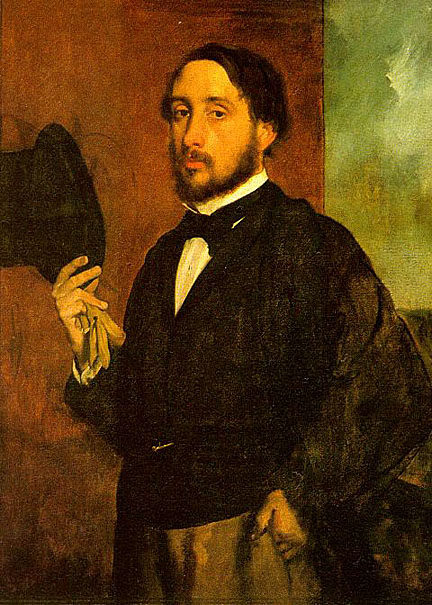
Edgar Degas, born Hilaire-Germain-Edgar Degas, was a French artist famous for his work in painting, sculpture, printmaking and drawing. He is regarded as one of the founders of Impressionism although he rejected the term, and preferred to be called a realist. A superb draughtsman, he is especially identified with the subject of the dance, and over half his works depict dancers. These display his mastery in the depiction of movement, as do his racecourse subjects and female nudes. His portraits are considered to be among the finest in the history of art.
Early in his career, his ambition was to be a history painter, a calling for which he was well prepared by his rigorous academic training and close study of classic art. In his early thirties he changed course, and by bringing the traditional methods of a history painter to bear on contemporary subject matter, he became a classical painter of modern life.
A Carriage at the Races: ca 1872

Before the Race: 1871-72
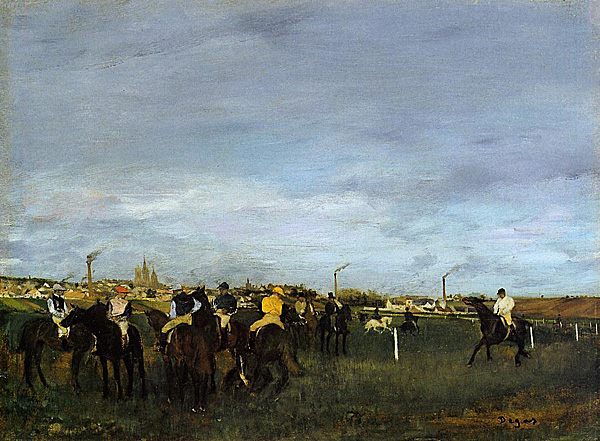
On the Racing Field
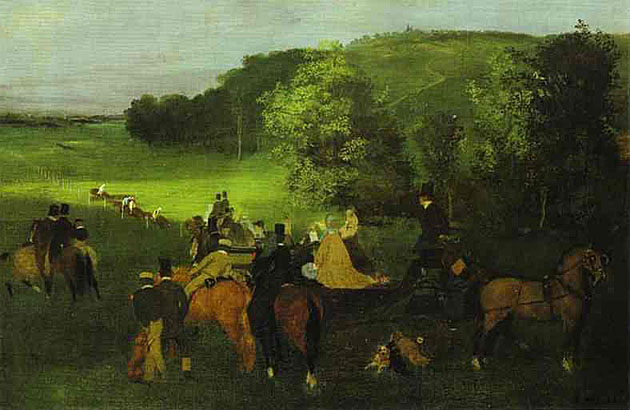
At the Races Before the Start
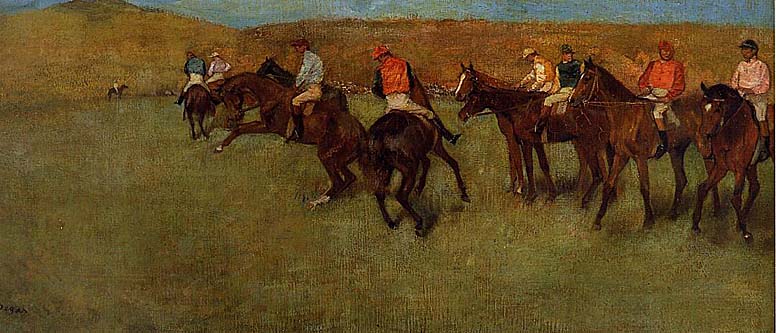
At the Races Gentlemen Jockeys: ca 1877-80
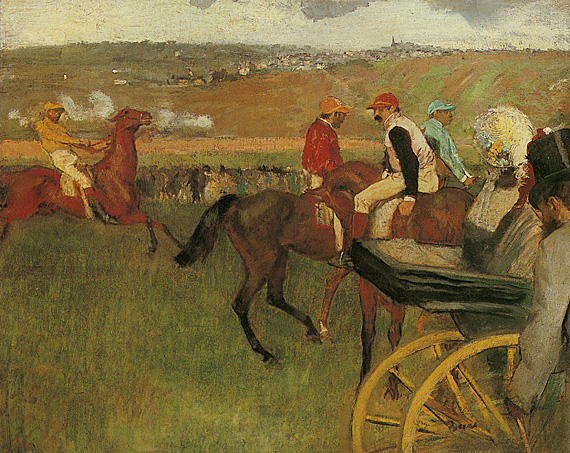
At the Races the Start: 1861-62
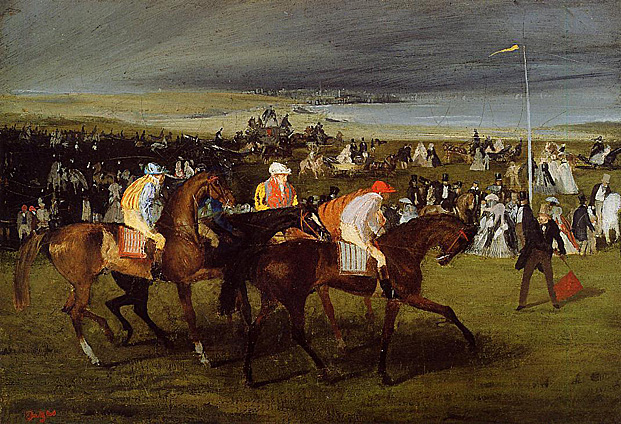
Ballet at the Paris Opera: 1877-78

Ballet Class: 1881
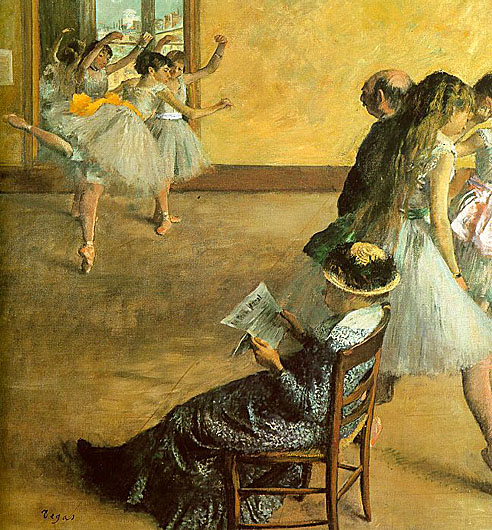
L'Etoile: ca 1878

Ballet Rehearsal
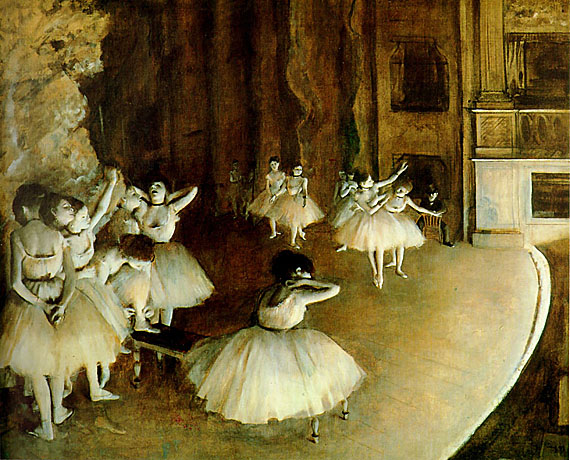
The Rehearsal: 1877
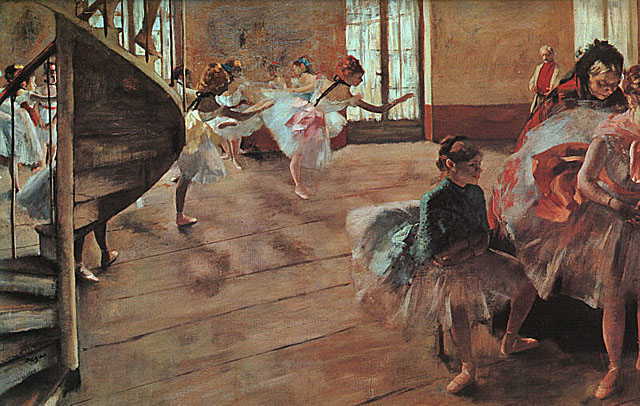
Dance Class
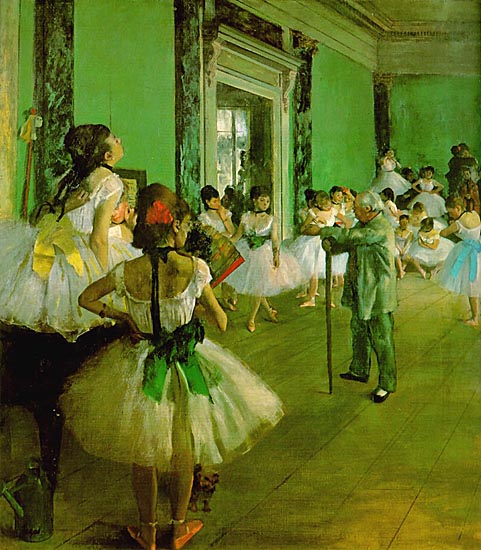
Dancers at their Class
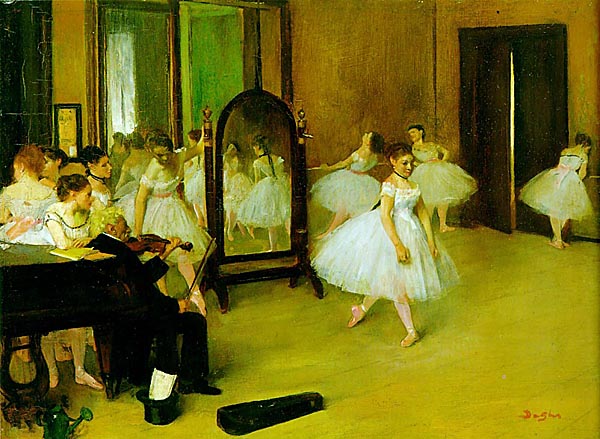
Dancers in Pink: 1880-85
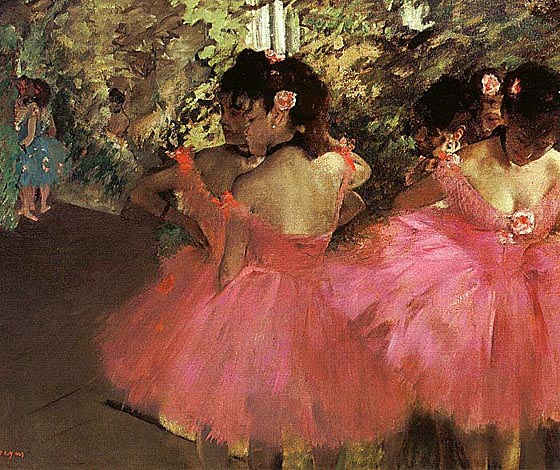
At The Ballet
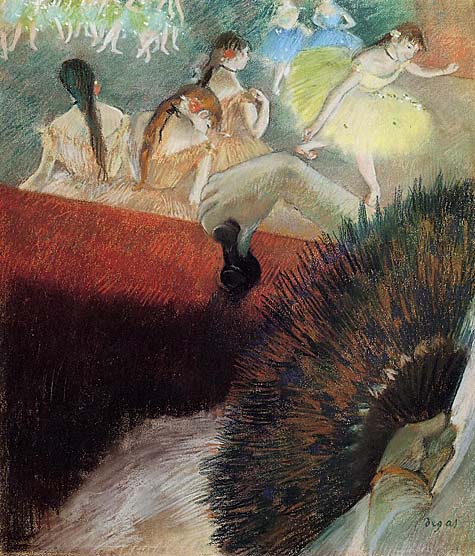
Ballerina and Lady with a Fan
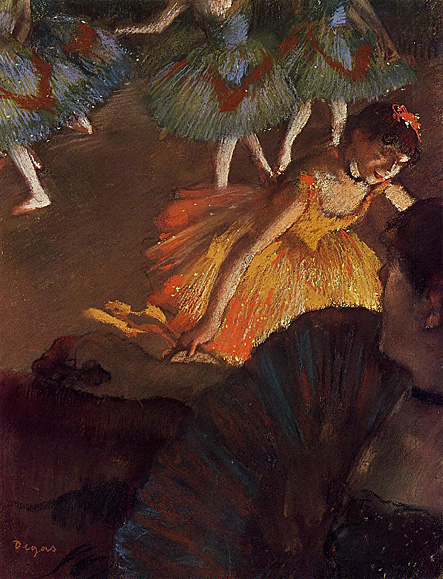
Before the Rehearsal: ca 1880
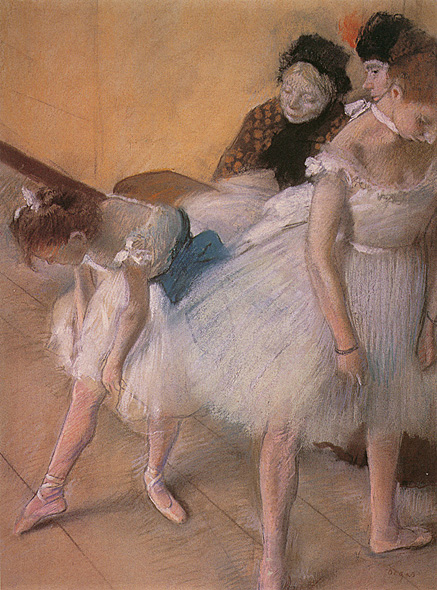
Ballet Rehearsal: ca 1875
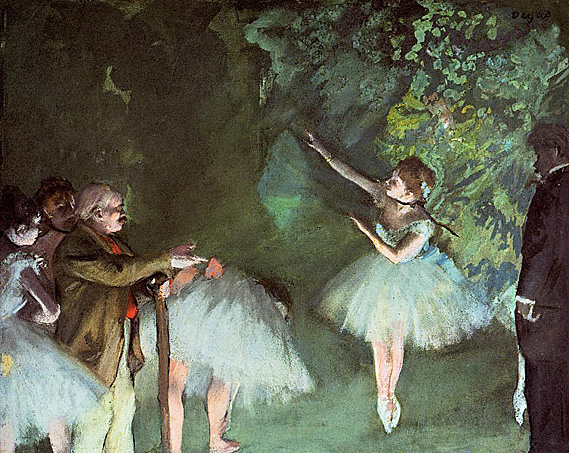
Rehearsal on the Stage: 1878-79

Dancer at the Barre: ca 1880
.jpg)
Dancer at the Photographers: 1875
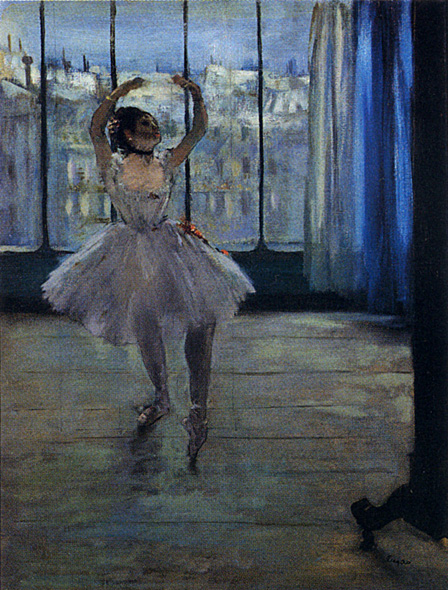
Four Dancers: 1899

The Star
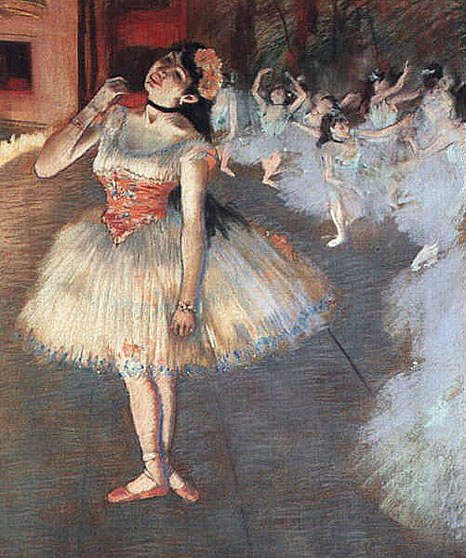
Little Dancer Fourteen Years
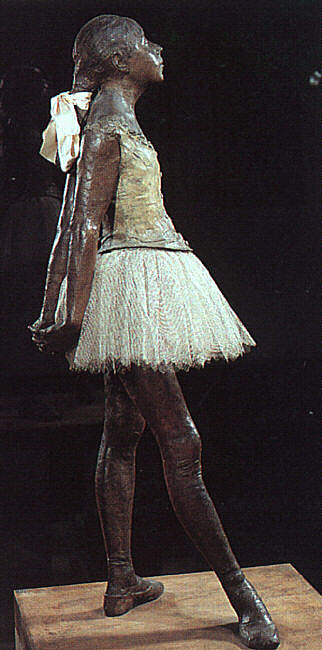
Orchestra Muscians

The Orchestra of the Opera
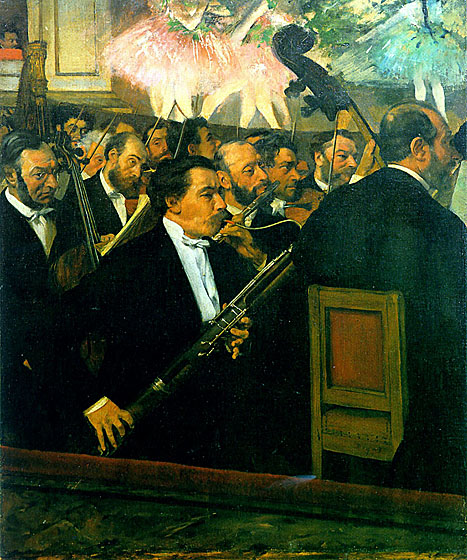
Singer with a Glove
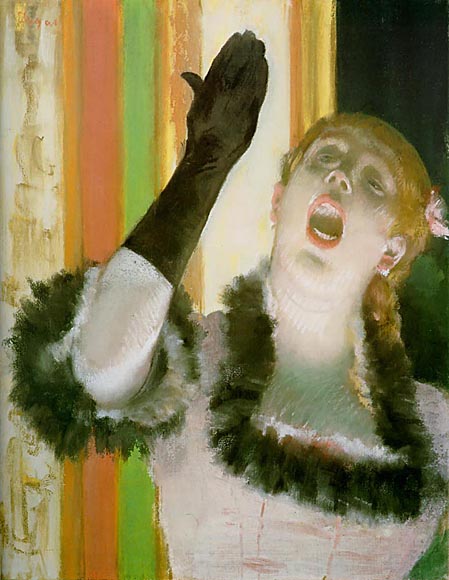
Song of the Dog
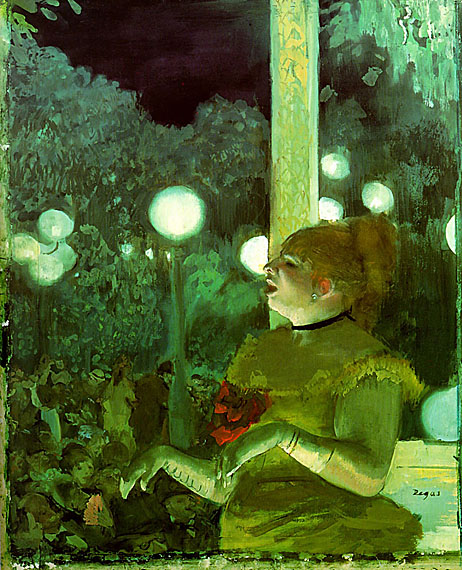
Cafe Concert At Les Ambassadeurs
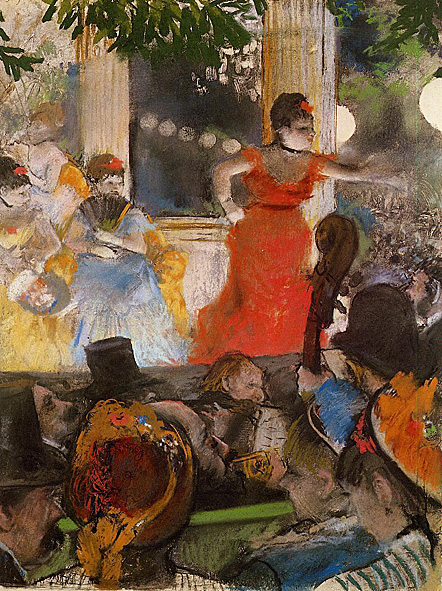
The Millinery Shop: 1884-90
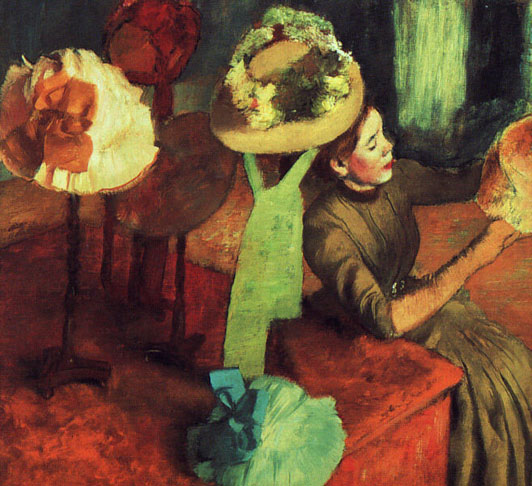
At the Milliners: 1882
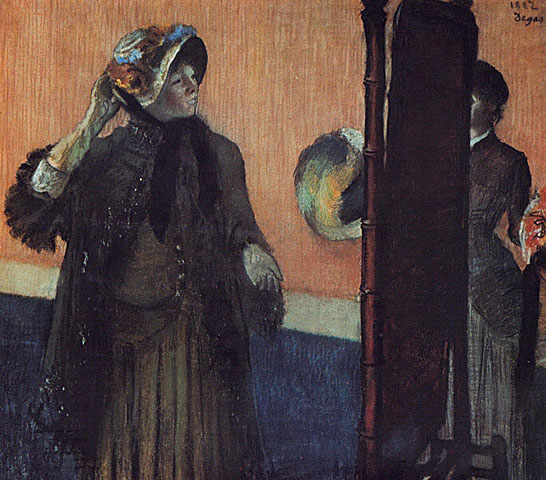
At the Milliner's
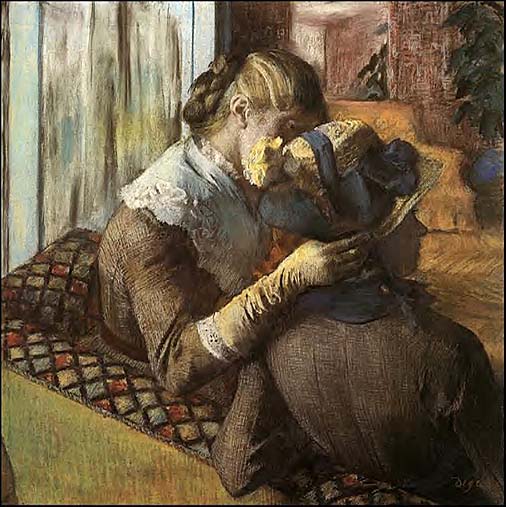
At the Milliner's
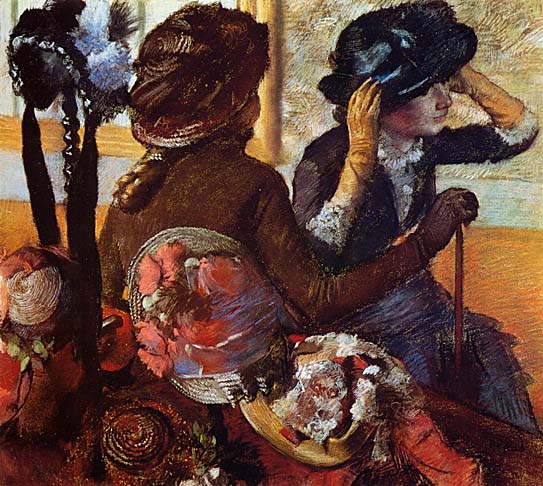
At the Mirror
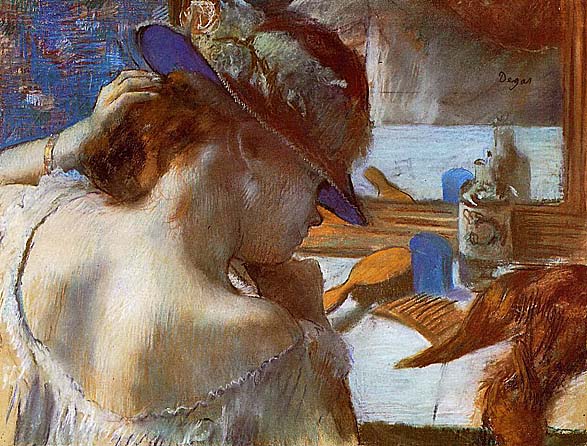
Self Portrait

Self Portrait: ca 1855
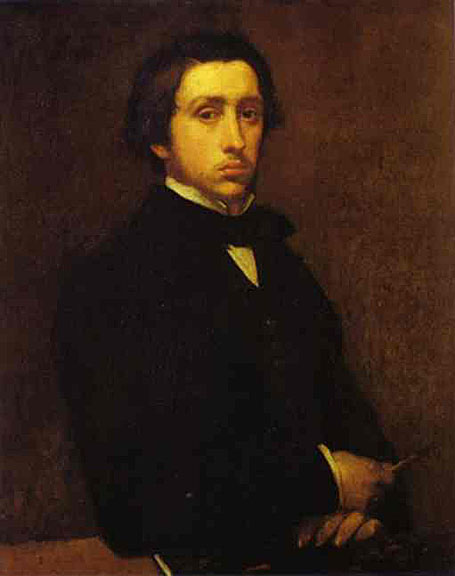
Edgar Degas in a Green Jacket: 1855-56

Diego Martelli
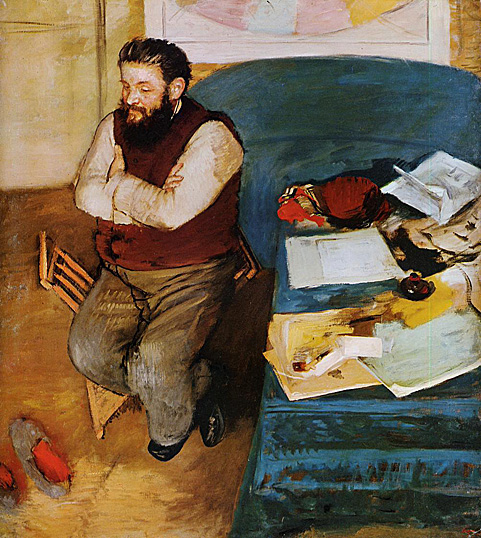
Diego Martelli was one of the leading and influential art critic in Florence -- a defender of the Macchiaioli and the impressionists and became close friends with artists who displayed the qualities most admired in Degas.
Degas and Evariste de Valernes

Achille De Gas in the Uniform of a Cadet: 1857
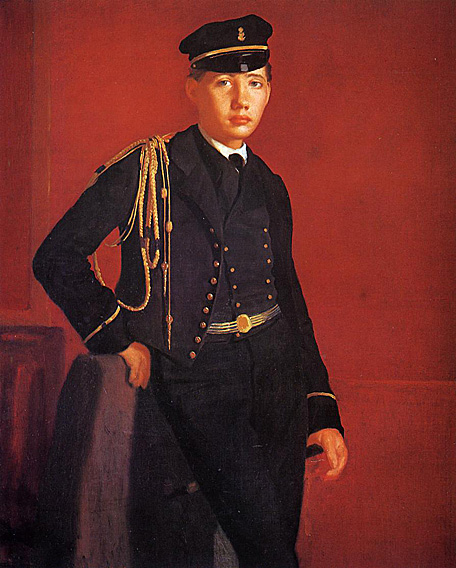
Edmond and Therese Morbilli: 1867
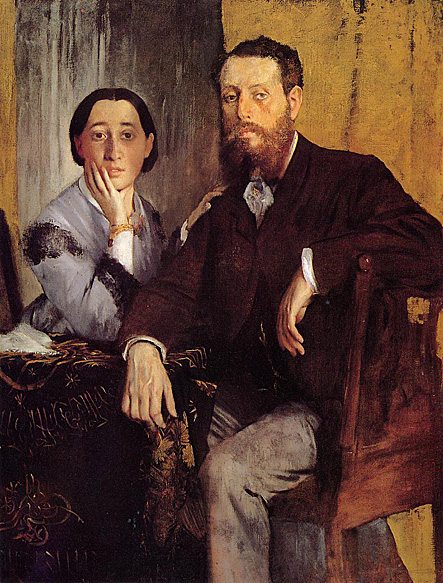
Degas' family was relatively affluent, so he did not have to rely entirely on sales of his work for financial support. He was thus free to experiment and choose his own subjects; almost all of his portraits depict relatives or friends. He was also able to delay finishing paintings, reworking them until they met his exacting standards. Many times Degas retrieved works he had already delivered so that he could perfect them. Some he never completed. This unfinished portrait of Degas' sister and her Neapolitan husband is one such example. (The painting was in his studio at the time of his death.) Notice how Therese's dress and shawl are undefined masses of color. There, Degas has scraped and rubbed the paint off the canvas. The dark lines indicate changes he intended but never made. The faces, by contrast, are carefully finished, detailed and expressive. Degas hoped to capture his sitters, he said, in "familiar and typical attitudes."
Edmond Duranty
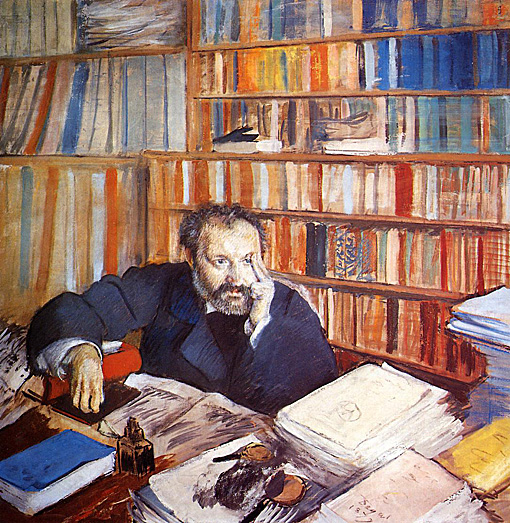
Louis Edmond Duranty was a prolific novelist and art critic. Duranty supported the realist cause and later the Impressionists. He was challenged to a duel in 1870 by Édouard Manet over an affront. A friend of Edgar Degas, he was a frequent visitor to the Café Guerbois. He was also the author of The New Painting.
Emma Dobigny: 1869

Head of a Young Woman: 1867
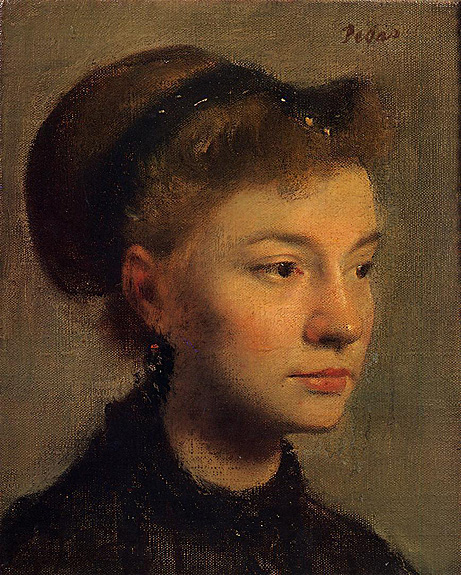
Henri De Gas and His Neice Lucie Degas: ca 1876
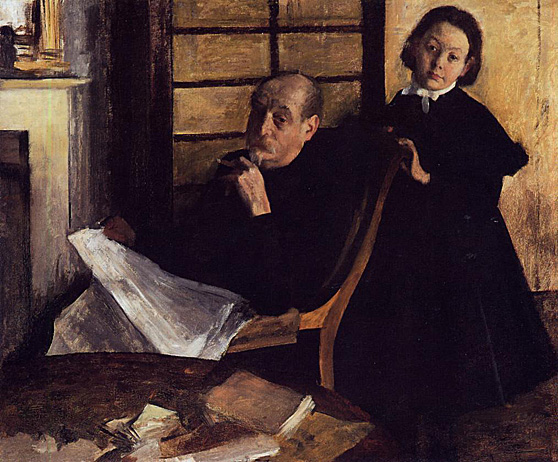
Hortense Valpin: 1869-70
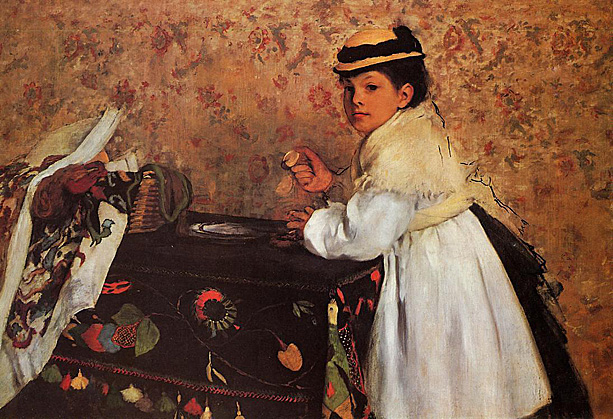
Interior
(aka The Rape: ca 1868)

Degas did not give this picture its dual title; he simply - and enigmatically - referred to it as 'my genre painting'. According to one (unlikely) interpretation, it illustrates a passage from Emile Zola's recently published novel, Thérèse Raquin.
A Roman Beggar Woman: 1857
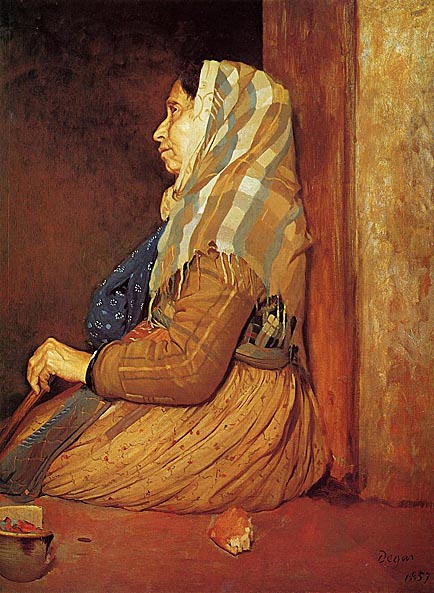
Absinthe: 1876
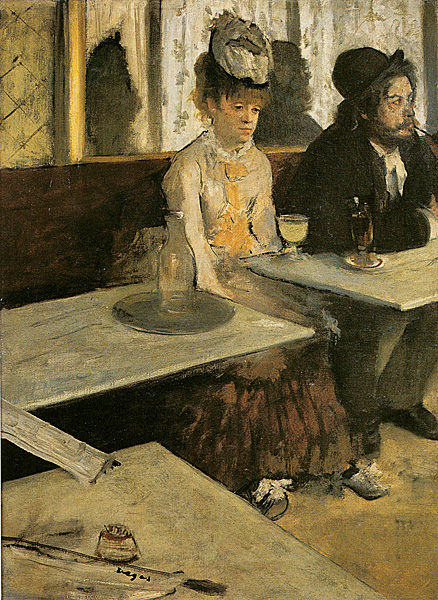
Woman At Her Toilet
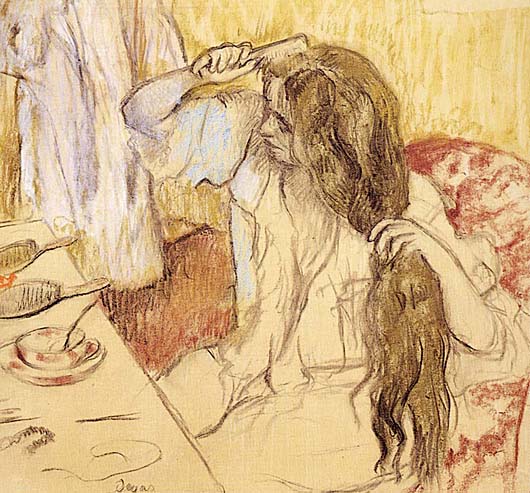
Woman Combing Her Hair
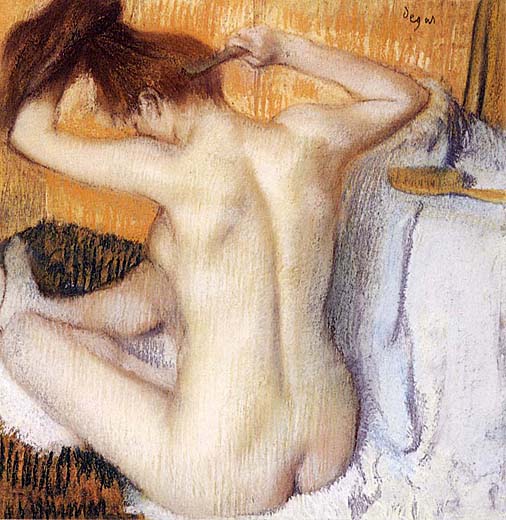
The Tub

After the Bath
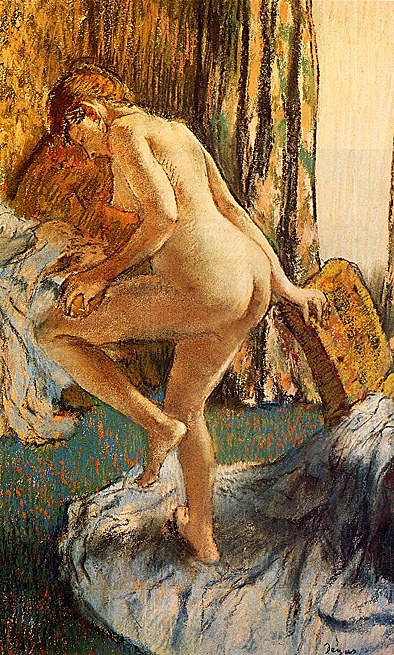
After the Bath
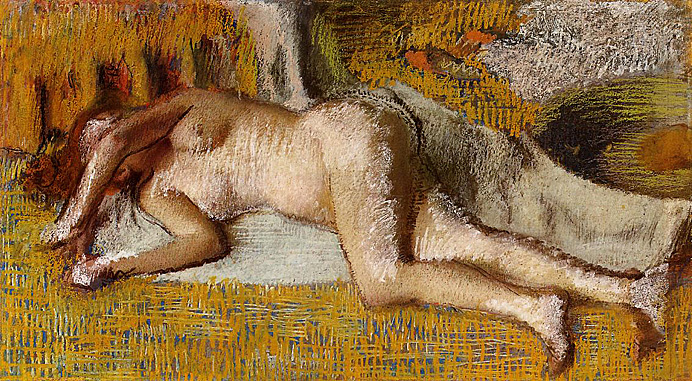
After the Bath: 1884
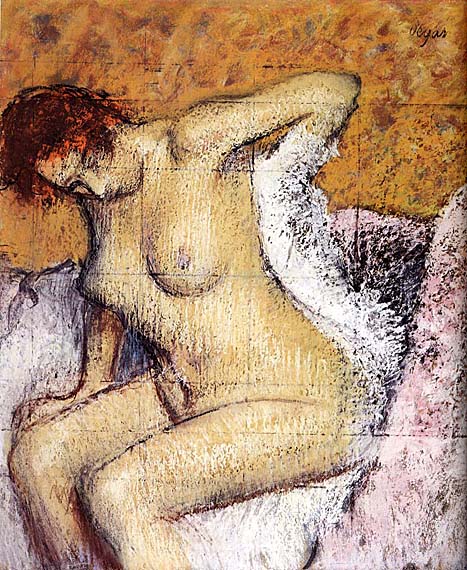
After the Bath: 1895
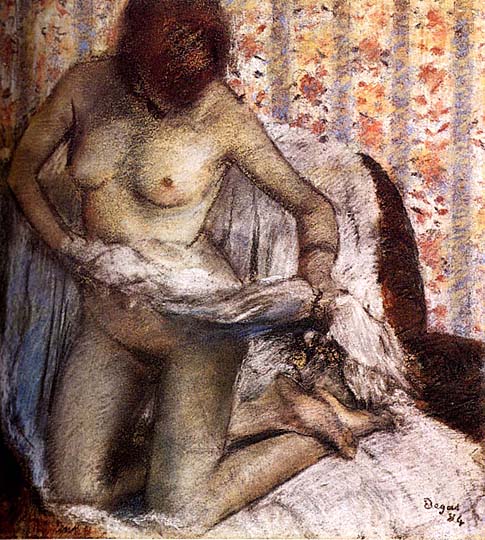
After the Bath Woman Drying Herself
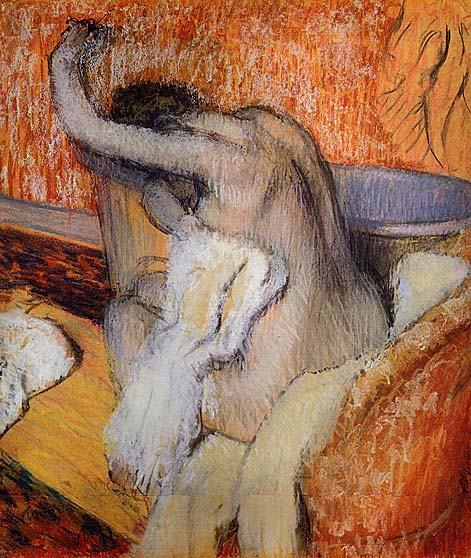
Woman Ironing: 1884-86
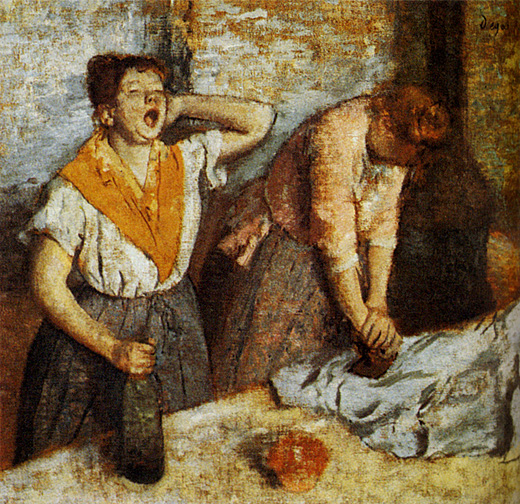
"He had a reputation for misogyny, mainly because he rejected the hypocrisy about formal beauty embedded in the depilated Salon nudes of Bouguereau and Cabanel - ideal wax with little rosy nipples. "Why do you paint women so ugly, Monsieur Degas?" some hostess unwisely asked him. "Parce que la femme en general est laide, madame," growled the old terror: "Because, madam, women in general are ugly."
"This was a blague. To find Degas's true feelings about women, one should consult the pastels and oil paintings of nudes that he made, at the height of his powers, in the 1880s and 1890s. Some critics still find them "clinical," because they seem to be done from a point outside the model's awareness, as though she did not know he was there and were not, actually, posing. "I want to look through the keyhole," Degas said. The bathers were "like cats licking themselves." Their bodies are radiant, worked and reworked almost to a thick crust of pastel, mat and blooming with myriad strokes within their tough winding contours.
Henri Michel Levy: 1879
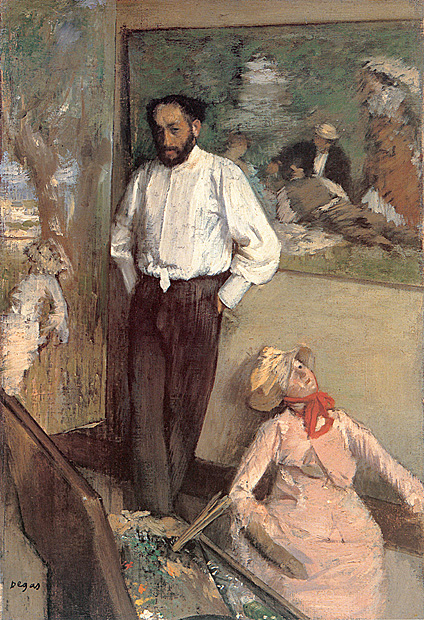
Degas the Amateur
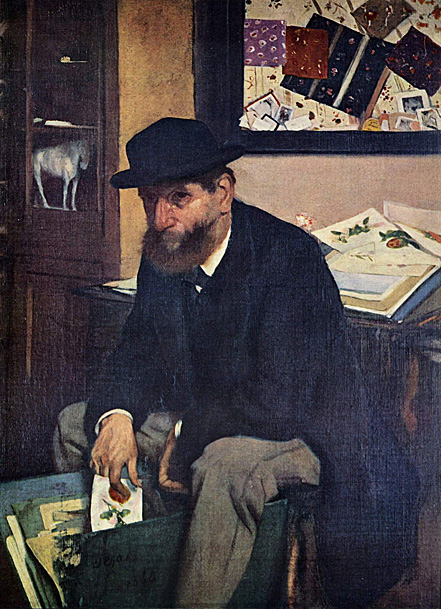
Edmondo and Therese Morbilli
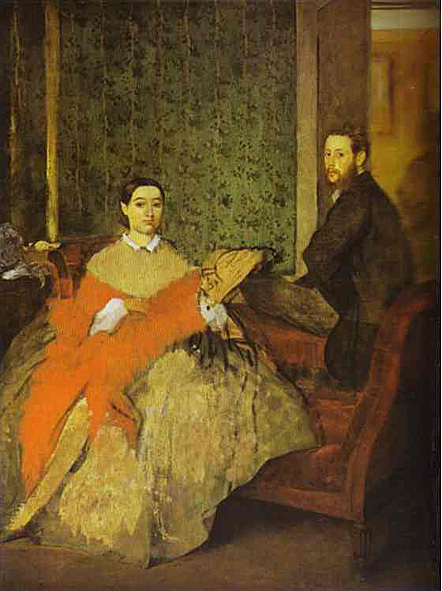
Girl in Red
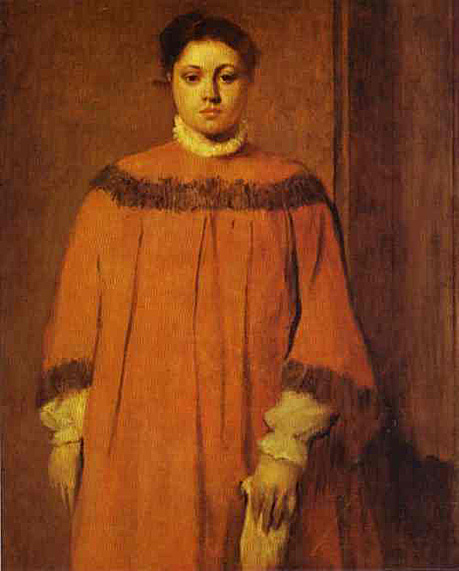
La La at the Cirque Fernando: 1879
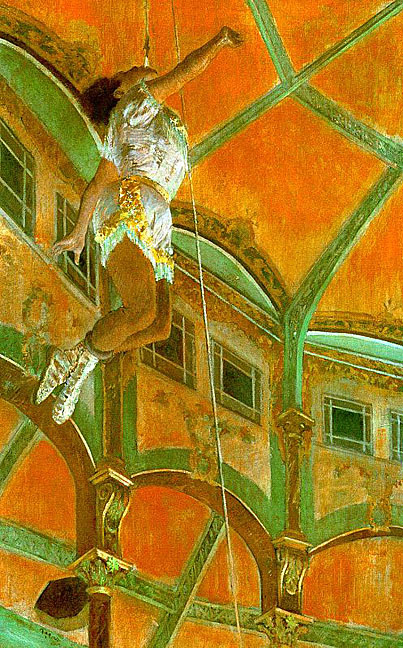
Madame Valpincon with Chrysanthemums: 1865
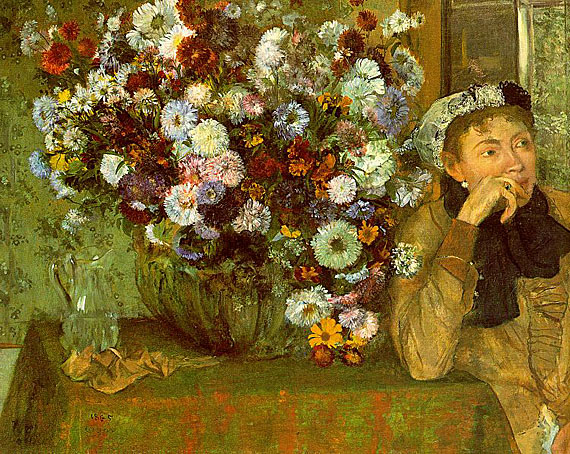
Marguerite de Gas the Artist's Sister
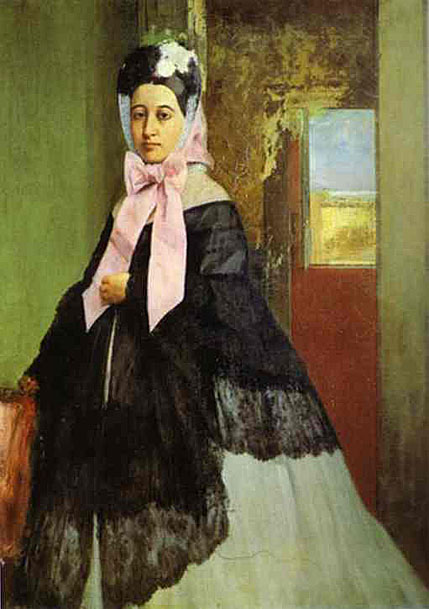
Mme Eugenie Fiocre in the Ballet La Source

Place de'la Concorde
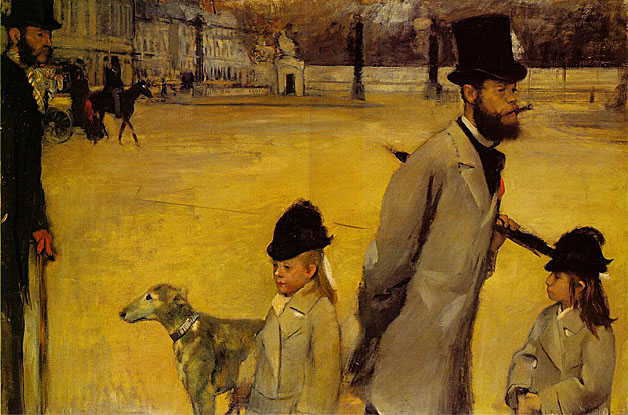
The Place de la Concorde is one of the major squares in Paris, France. It is located in the city's eighth arrondissement, at the eastern end of the Champs-Élysées.
The Place was designed by Ange-Jacques Gabriel in 1755 as a moat-skirted octagon between the Champs-Élysées to the west and the Tuileries Gardens to the east. Filled with statues and fountains, the area was named Place Louis XV to honor the then king. The Place was showcasing an equestrian statue of the king, which had been commissioned in 1748 by the city of Paris, sculpted mostly by Edmé Bouchardon, and completed by Jean-Baptiste Pigalle after the death of the former.
Place de la Concorde in 1885. The Palais Bourbon can be seen in the background, beyond the River SeineAt the north end, two magnificent identical stone buildings were constructed. Separated by the rue Royale, these structures remain among the best examples of that period's architecture. Initially they served as government offices, and the eastern one is the French Naval Ministry. Shortly after its construction, the western building was made into the luxurious Hôtel de Crillon (still operating today) where Marie Antoinette soon spent afternoons relaxing and taking piano lessons. The hôtel served as the headquarters of the occupying German army during World War II.
During the French Revolution the statue of King Louis was torn down and the area renamed "Place de la Révolution". In a grim reminder to the nobility of a gruesome past, when the "Place de Grève" was a site where the nobility and members of the bourgeoisie were entertained watching convicted criminals being dismembered alive, the new revolutionary government erected the guillotine there. The first notable to be executed at the Place de la Révolution was King Louis XVI, on January 21, 1793. Other important people guillotined there, often in front of cheering crowds, were Queen Marie Antoinette, Madame Élisabeth, Charlotte Corday, Madame du Barry, Danton, Desmoulins, Lavoisier, Robespierre and Saint Just.
The guillotine was most active during the "Reign of Terror", in the summer of 1794, when in a single month more than 1,300 people were executed. A year later, when the revolution was taking a more moderate course, the guillotine was removed from the square and its name was changed in token of national reconciliation.
Madame Dietz Monnin: 1877-79
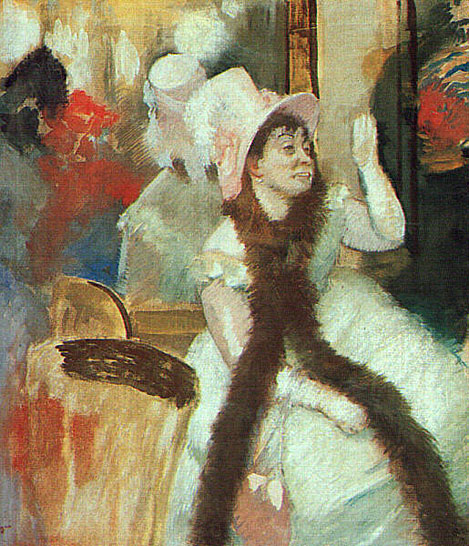
New Orleans Cotton Exchange
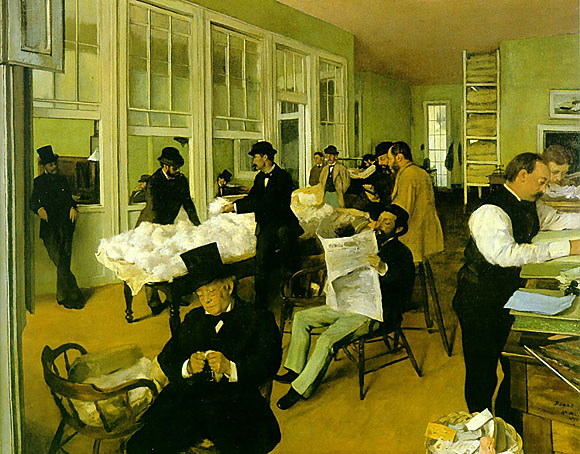
Hilaire de Gas Grandfather of the Artist: 1857
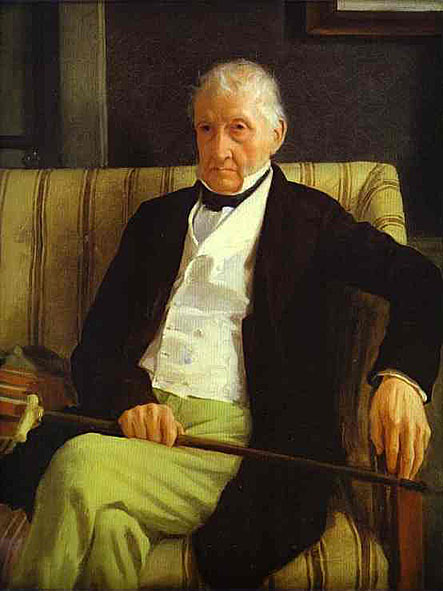
Portrait of James Tissot
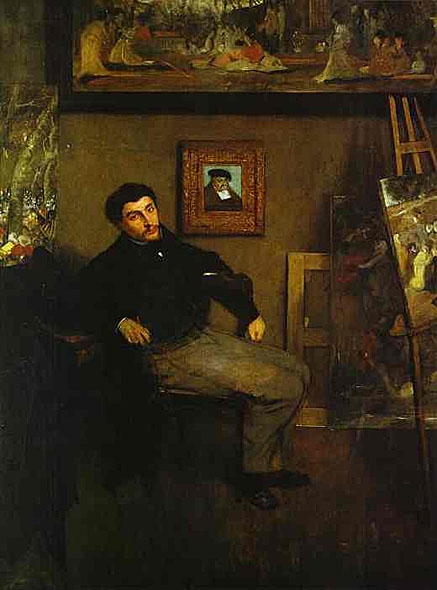
James Tissot was a French painter and graphic artist. Early in his career he painted historical costume pieces, but in about 1864 he turned with great success to scenes of contemporary life, usually involving fashionable women. Following his alleged involvement in the turbulent events of the Paris Commune (1871) he took refuge in London, where he lived from 1871 to 1882. He was just as successful there as he had been in Paris and lived in some style in St John's Wood; in 1874 Edmond de Goncourt wrote sarcastically that he had `a studio with a waiting room where, at all times, there is iced champagne at the disposal of visitors, and around the studio, a garden where, all day long, one can see a footman in silk stockings brushing and shining the shrubbery leaves'.
His pictures are distinguished most obviously by his love of painting women's costumes: indeed, his work--which has a fashion-plate elegance and a chocolate-box charm-- has probably been more often reproduced in works on the history of costume than on the history of painting. He also, however, had a gift for wittily observing nuances of social behavior. In 1882, following the death of his mistress Kathleen Newton (the archetypal Tissot model-- beautiful but rather vacant), he returned to France. In 1888 he underwent a religious conversion when he went into a church to `catch the atmosphere for a picture', and thereafter he devoted himself to religious subjects. He visited the Holy Land in 1886-87 and in 1889, and his illustrations to the events of the Bible were enormously popular, both in book form and when the original drawings were exhibited.
Portrait of Mary Cassatt: 1880-84

Mary Stevenson Cassatt was an American painter and printmaker. She lived much of her adult life in France, where she first befriended Edgar Degas and later exhibited among the Impressionists.
Cassatt often created images of the social and private lives of women, with particular emphasis on the intimate bonds between mothers and children.
Semiramis Building Babylon
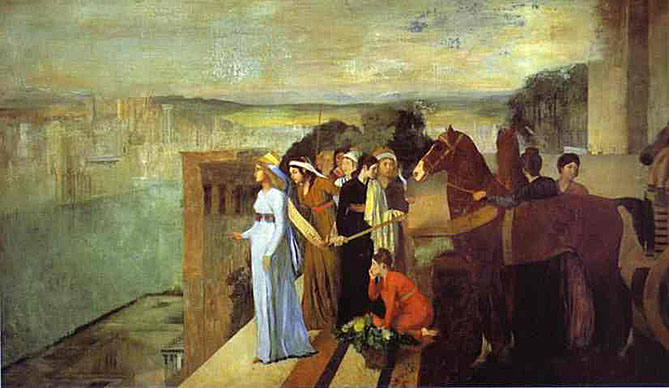
Spartan Girls Challenging Boys
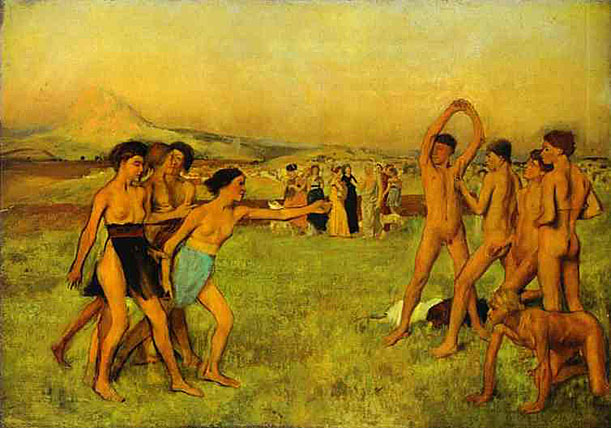
The Belleli Family
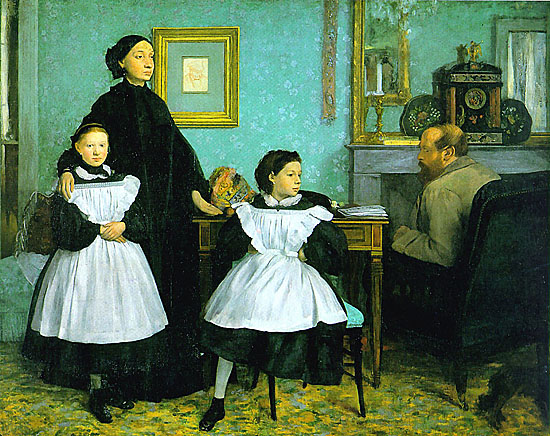
Degas, in this early painting of his relatives, clearly shows who rules the house in this scene. The mother, in black, towers over the picture, she is looking away and beyond us, into the future. Forming a strong, triangular composition, are her two daughters, dressed in black and white, one facing towards us, the other one, like her mom, facing into the future. This powerful "trinity" of women commands this domestic scene. The man in the back, presumably the woman's husband, is in the foreground, bent away from the viewer. His head turns shyly towards the towering triangle of women. His attire blends with the rug, so that he is almost camouflaged in the back. Such a statement is not unusual for Degas, where he is likely to put the woman in a couple towering in the foreground with her partner in the background. This powerful view of women was unusual for the Salon, particularly in a non-heroic, domestic setting.
The Dead Fox
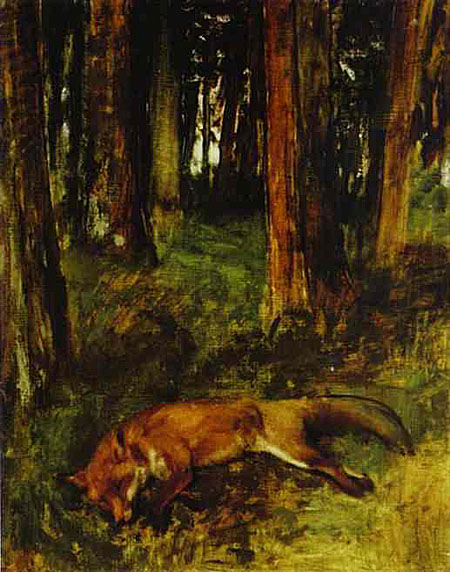
Therese de Gas the Artist's Sister
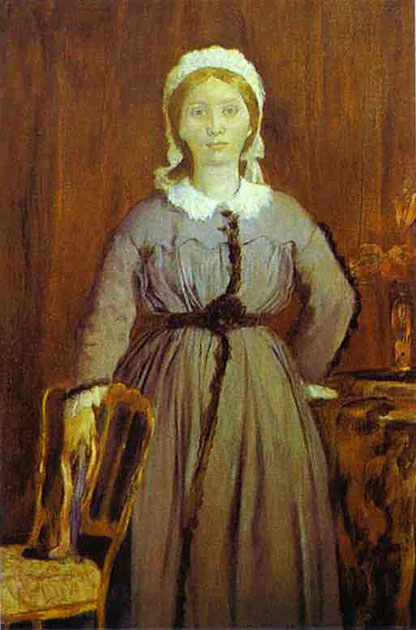
Woman Ironing

Young Woman
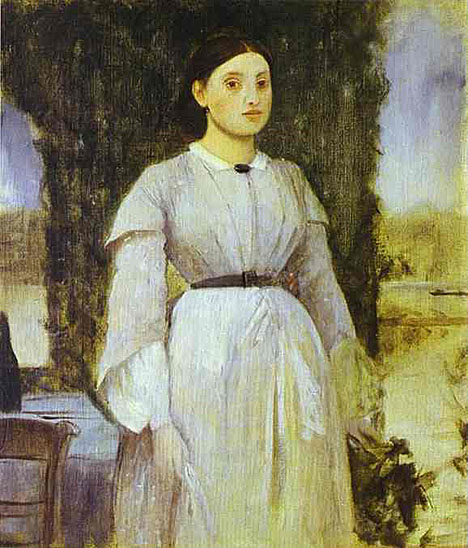
Source: Art Renewal Center
This page is the work of Senex Magister
Return to Pagina Artis
Return to Bruce and Bobbie's Main Page.
 Viatores
Viatores





















.jpg)


























































